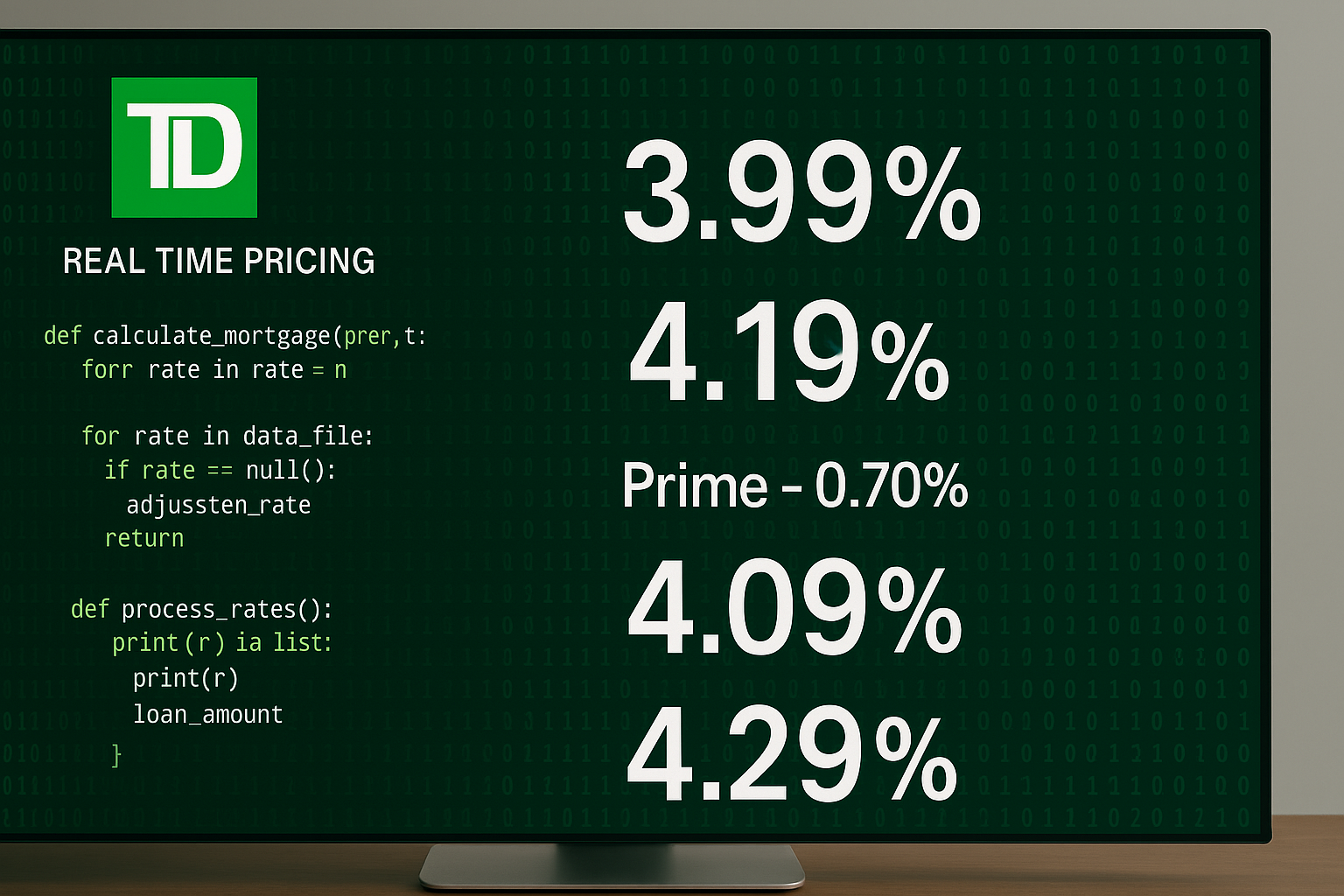MLN Alerts In ET
News-Stream
Canada and Mexico have dodged additional reciprocal tariffs—for now. Unfortunately, Trump's existing ransom demands remain in full force:
Canada Spared Full Brunt of Tariffs: Rates Close Flat
Canada and Mexico have dodged additional reciprocal tariffs—for now.
Unfortunately, Trump's existing ransom demands remain in full force:
Back to topTD's rate quoting system wasn't working well—for anyone, including brokers, customers and the bank itself. So, management radically changed to a new model called "Real Time Pricing (RTP)." It kicked off today, April 1, following TD's trial run with a few
TD Launches Real-time Pricing
TD's rate quoting system wasn't working well—for anyone, including brokers, customers and the bank itself. So, management radically changed to a new model called "Real Time Pricing (RTP)." It kicked off today, April 1, following TD's trial run with a few mortgage industry heavyweights.
If you're a TD broker, you've probably heard much about it already, so we'll skip all the fluff. Here’s the part that actually matters if you’ve got deals to close and clients who view interest rates as a zero-sum game.
Back to topIn this latest instalment of "Canadian Fintechs: The Struggle is Real," we revisit Mogo. Followers of the company may remember that it launched the MogoMortgage in 2017 with more fanfare than a Canada Day parade. The company vowed to "drive high-margin, transaction revenue" from home loans
What Ever Happened to MogoMortgage?
In this latest instalment of "Canadian Fintechs: The Struggle is Real," we revisit Mogo.
Followers of the company may remember that it launched the MogoMortgage in 2017 with more fanfare than a Canada Day parade. The company vowed to "drive high-margin, transaction revenue" from home loans and "gamify" the mortgage experience.
As it turns out, the business has been anything but fun and games for the company.
Back to top



